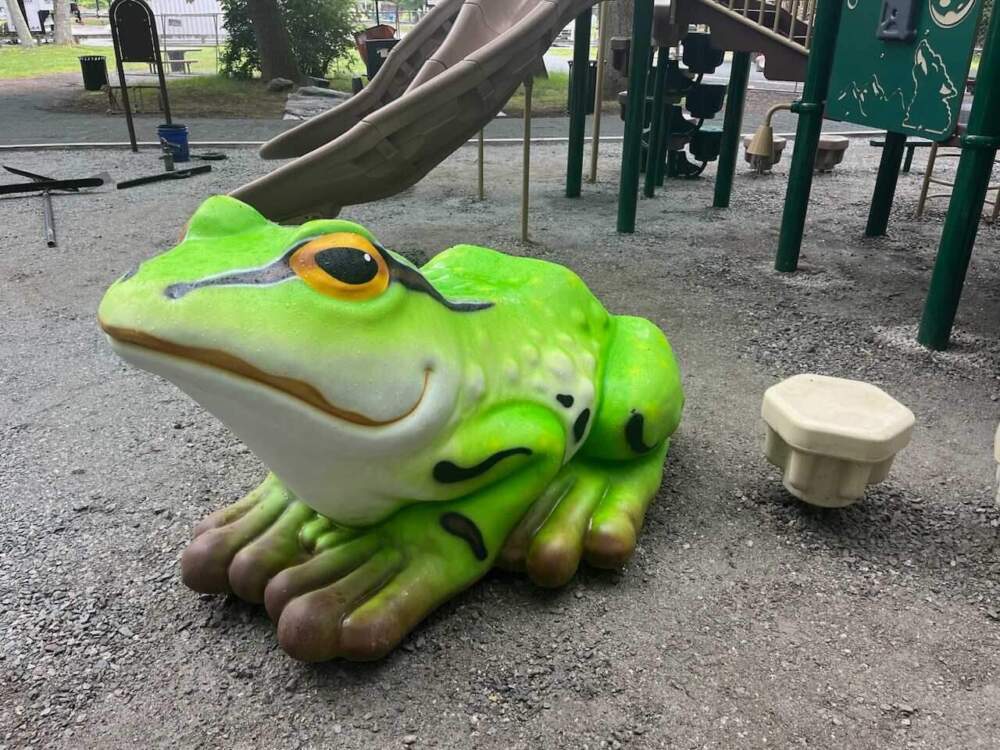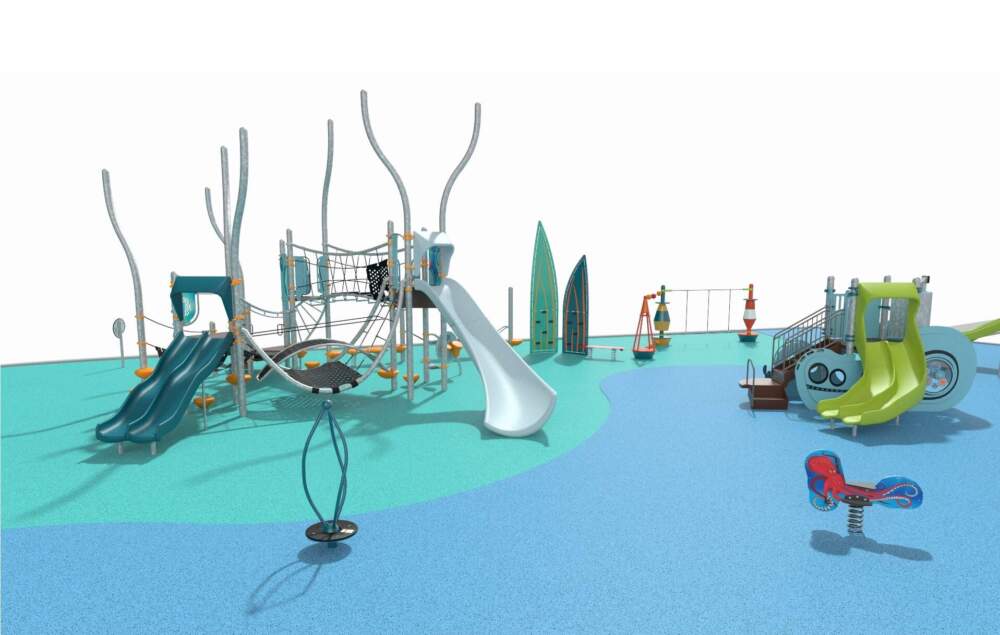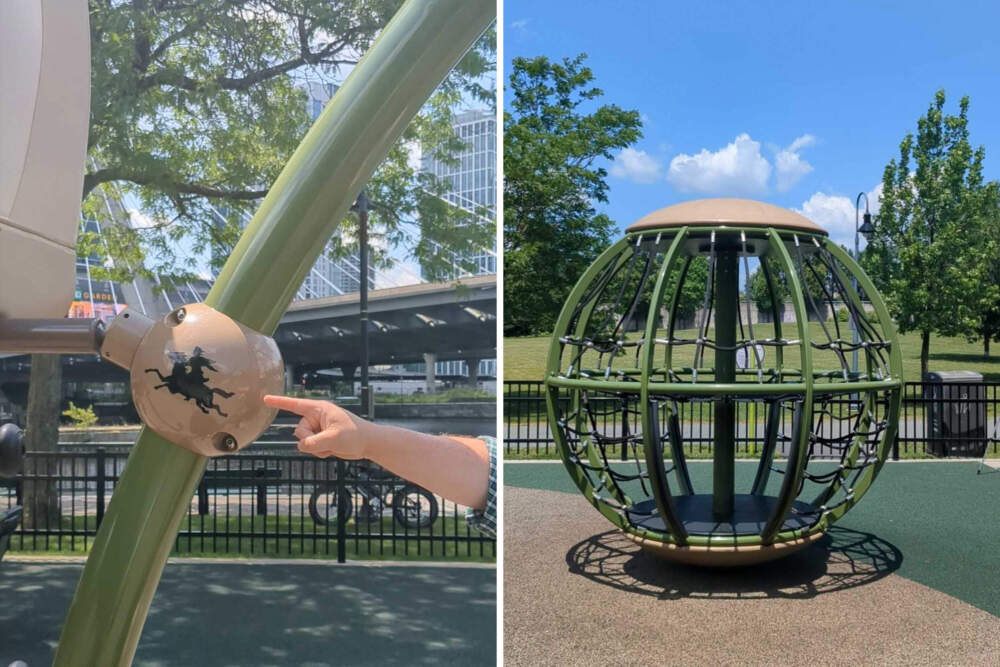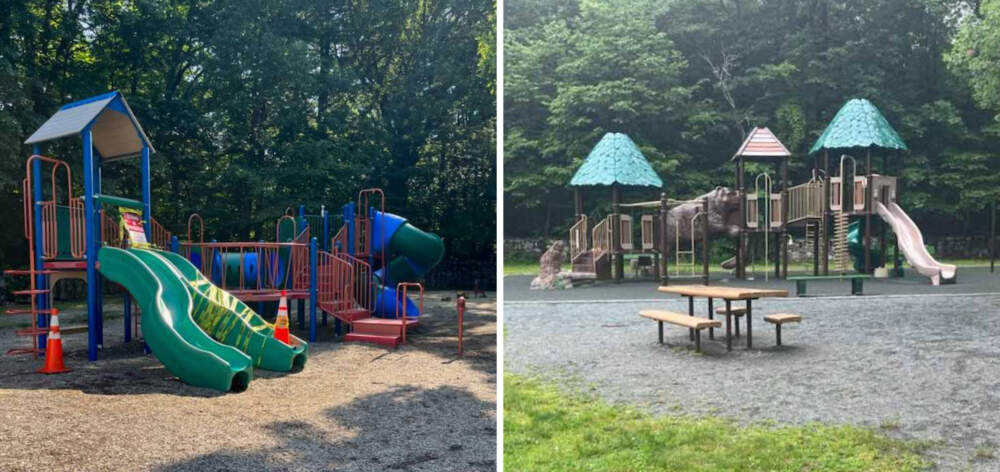Advertisement
The Weekender: Boston's Saturday Morning Newsletter
What makes a playground fun, according to Mass. DCR’s playground guru

Editor's Note: This is an excerpt from WBUR's Saturday morning newsletter, The Weekender. If you like what you read and want it in your inbox, sign up here.
Crafting a playground may seem simple at first: Install a slide, a few sets of swings, maybe some monkey bars and you’re set.
But what if that slide is made of material that isn’t slippery enough? Or, what if it’s angled in a way that causes someone to pick up too much speed? That’s the difference between a playground that’s popular and one that’s infamous.
Across Massachusetts, there are nearly 80 playgrounds managed by the state's Department of Conservation and Recreation. And the person making sure each one of them is fun and safe is Sandra Libby, the department’s official playground planner.
Libby has been a certified playground inspector for 25 years, and has spent the last nine of those years as DCR’s playground planner. She looks through landscaping plans, tinkers with structure materials, talks to manufacturers and, maybe most importantly, thinks about what children would want to play on, from jungle gyms to pirate ships to spinners. “The goal is for every kid to go there and feel like they have something that they really enjoy and can use,” she said.

With Libby’s oversight, Mass. DCR has revamped 58 of its playgrounds over the last decade, and six this year alone. They’ve got three new playgrounds in the works for the coming years. And the fully renovated Gronk Playground, which was funded by former New England Patriots player Rob Gronkowski, is set to open on the Charles River Esplanade in August. Ahead of the playground’s unveiling, I spoke to Libby about playground planning and how to make one that’s truly fun.
Editor’s note: This conversation has been edited for length and clarity.
Hanna Ali: How does someone become a “playground planner”?
Sandy Libby: "There’s not some course out there to become a playground planner. You can certainly become a planner or you can become a landscape architect or you can become an engineer. My job kind of incorporates all three of those. I’m a certified playground inspector and have been for 25 years, and I have a master’s in rehabilitation from Springfield College, so I’ve worked a lot with people with different abilities. And I have my own children, and they played on playgrounds all growing up."

HA: How do you pick a location for a playground?
SL: “First off, we have to build on state land.
“We have five regions in DCR, and Boston has most of the playgrounds. So we looked at the north, south, central and west, and I mapped out at least one spot [each] that would be good for a new playground. And that was because there would be a lot of people there or it was in an environmental justice area.
“Up in Lowell, for example, we’re building one at the Rynne Bathhouse. Which is great because there's bathrooms there already, there’s an ice cream stand across the street, there's already crosswalks, there's parking and there's a big, huge apartment complex across the street. Closer to Boston, we’re hoping to do one for MacDonald Park. That park touches four different communities, and there’s a huge parking lot there. So it’s a great spot for a playground.”
HA: What else do you consider when planning a new playground?
SL: “Well, the Americans with Disabilities Act, of course. And we try to go beyond that, we have the Universal Access Program.
“Another big consideration is the size of the area. For example, if it's an 8-foot swing, you need 16 feet in front and 16 feet behind. The shape of the area and how you're fitting the equipment in makes a big difference. And we do try to consider what's in other neighborhood playgrounds, so we are not duplicating things that maybe the school next door already has.”

HA: What makes a playground fun?
SL: “ I think being able to have something there for every kid. That's the goal. There's so many different things that you want to incorporate: swinging, climbing, spinning, slides, a rocker, a spring toy or a seesaw. You wanna get some character in there. You wanna get a quiet space in there for kids that need that quiet space. I really like light customization — Castle Island and Gronk are a little bit heavier on [that], but for the most part we do a light custom theme to just try to spark the imagination. And then get some good shade in there, so people enjoy it.”
HA: What are some of the features you’re most excited about on the upcoming renovated Gronk Playground?
SL: " We have another one of those spinners the kids really like — and anybody can go in and spin because it's at ground level. We have a custom duck boat with a couple little spring duck boats following it, so that's really cool, too. But the big feature is the football that's being spiked. A lot of the customization is really cool, it kind of sparks your imagination, and maybe it brings out your love for Boston because there's so much Boston going through it. And hopefully your love for sports and fitness, too."
HA: What goes into renovating an existing playground and how long does it take?
SL: “Once we determined which ones needed renovation, we started to prioritize how we could do it. There’s a lot of partial stuff we do with our maintenance money. All sites get attention, and about two to three [playgrounds] get completely replaced each year.
"Typically, it’ll take a year and a half to two years. Sometimes they happen a lot quicker than you think. Shawme-Crowell, which is down in Sandwich, was done in a year, but that was just using the same exact blueprint and basically taking it out and putting it in.

"With Zina Greenwood over in Stoneham, we did that in two phases. We had to do the [age] 5-12 structure, and that slide failed, so we immediately took it off and blocked it because it had a big crack in it. We then renovated the 5-12 area, and six months later, the [age] 2-5 area. So now the whole playground's done. And we have plans later on to do the picnic area.
"Right now, we have four projects that are bid-ready — all permitted, all designed and all ready once we get funding. We never know what's going to happen or what's coming down the pike, because people donate, like for Gronk Park. So, while we have renovated a large amount of our playgrounds over the last nine years, we still have work to do. It's like when you buy a house, you know? You always have work to do."
P.S. — There’s even more fun to be had beyond the gates of your local playground. This week, South Boston’s Condon pool reopened after months of repairs. And by the end of the year, Boston Mayor Michelle Wu said 20 out of 22 city-run pools will be open — more than there have been in a decade. So, if you’re searching for a spot to cool off during this sunny weekend, look no further!
